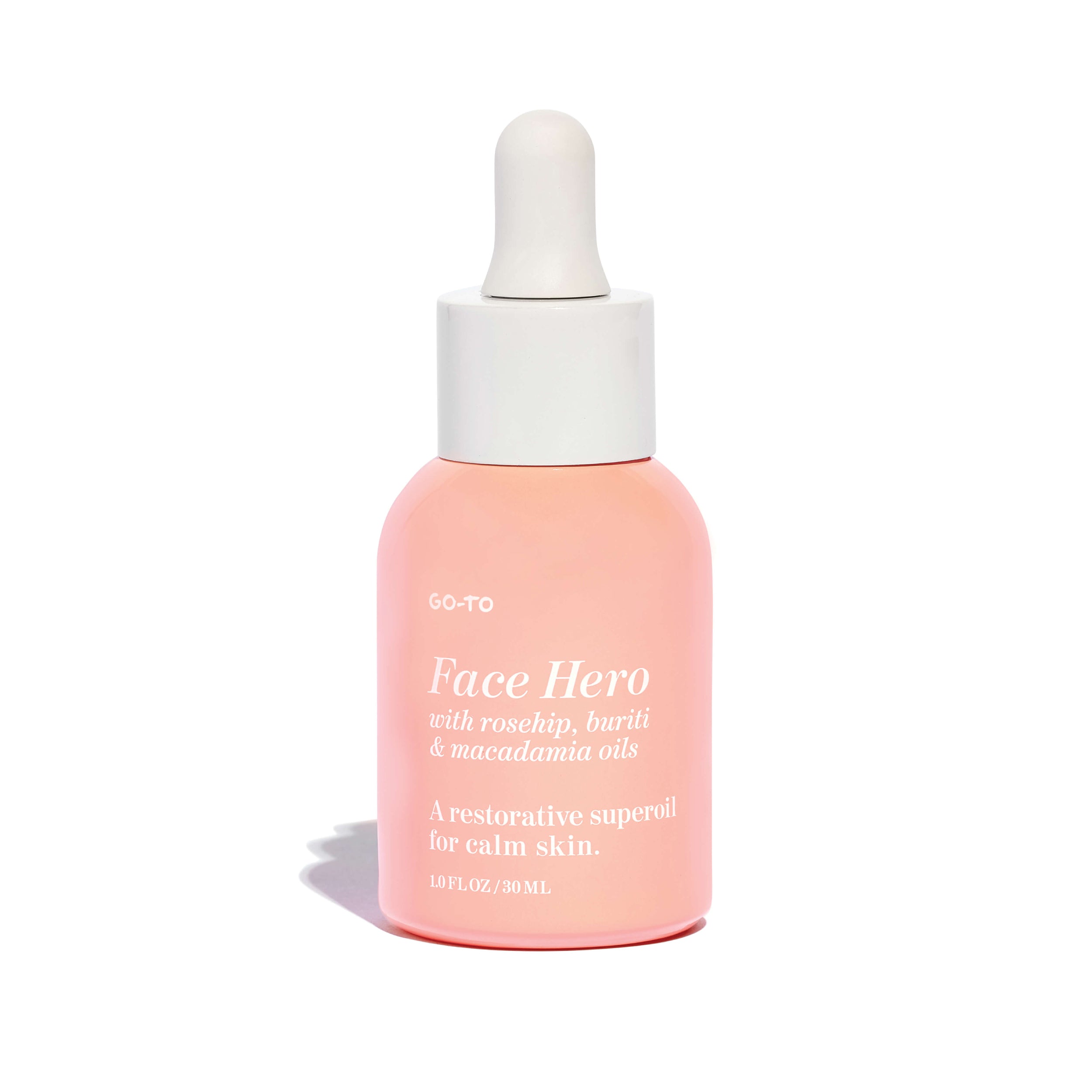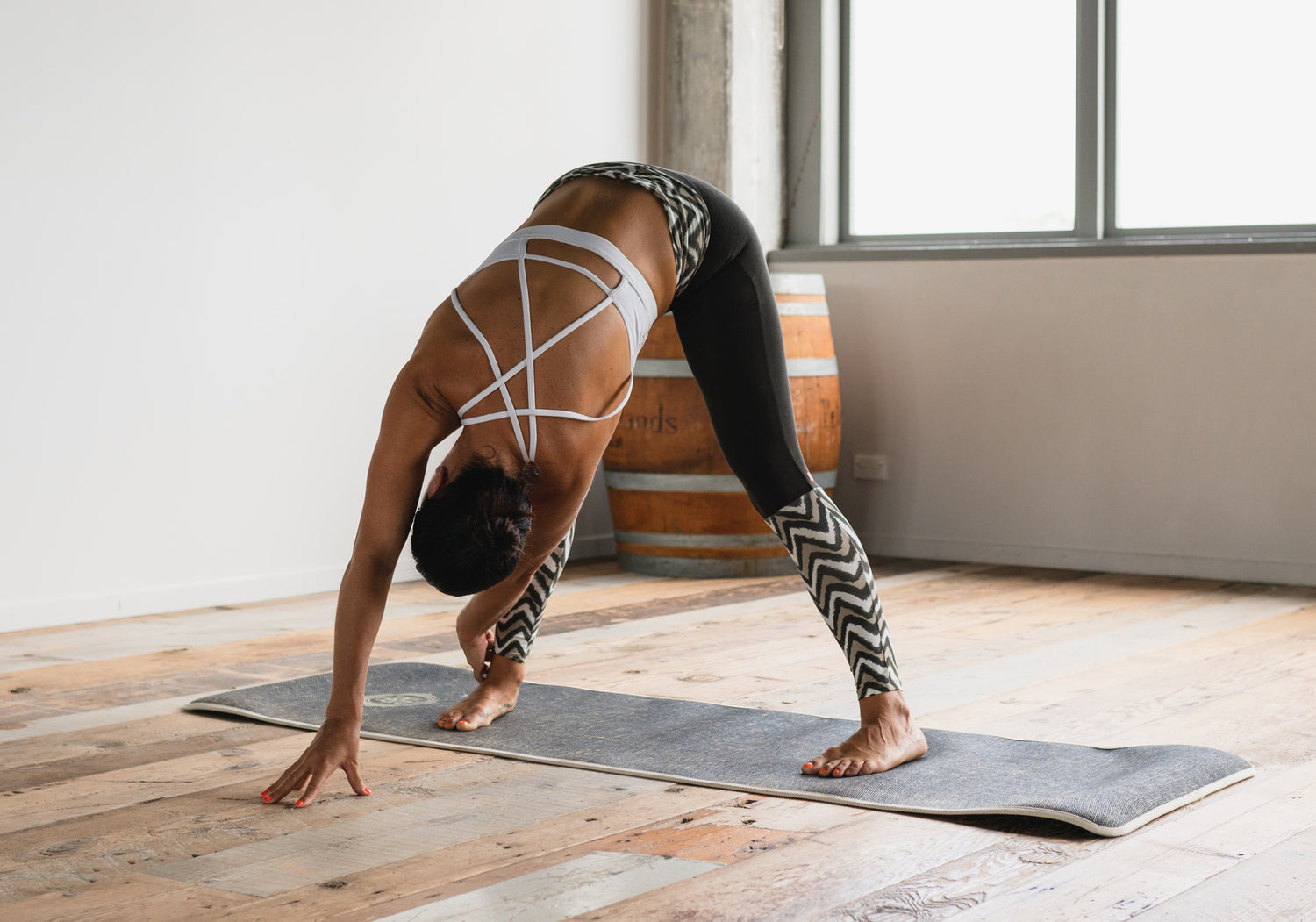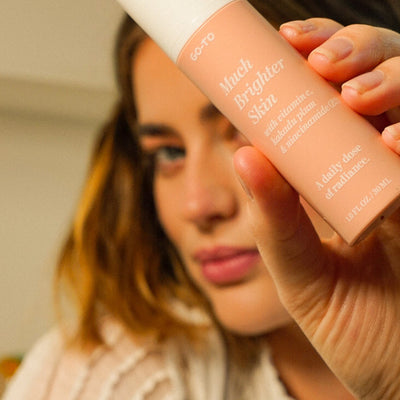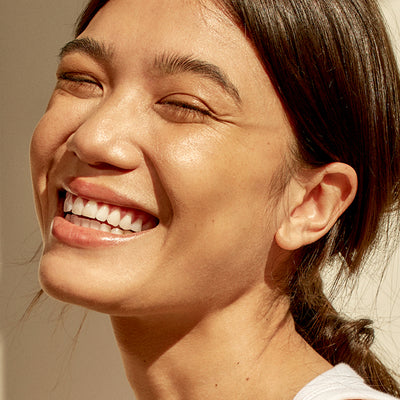On the surface, skin care and exercise don’t have a lot of things in common. For starters, I’m only fond of one. (You know which one.) But, as it turns out, your workout can have a real impact on your overall skin health; exercise boasts some serious skin benefits and also carries potential for skin damage.
Now, before you cancel that tabata class, it’s important to note that skin damage is preventable with the right routine. Dermatologist, co-founder of Bespoke Skin Technology, and all-round Skin Master, Dr. Katherine Armour has generously shared her workout wisdom to help you do just that.
But first, let’s start with the positives!
How Exercise Can Benefit Your Skin
Exercise is obviously magnificent for your physical health but here are three brilliant things sweating it out can do for your skin.
1. Increased Cell Turnover & Collagen Production
When you work out, your heart rate increases, and as a result, the delivery of oxygen and nutrients to your skin is increased.
“The increased blood flow to skin is part of our body’s mechanism to maintain our internal temperature within a safe range,” explains Dr. Armour. “The increased delivery of oxygen and nutrients promotes increased skin cell turnover and collagen production.”
Collagen is a protein present naturally within our bodies. (Amongst other things, it’s what keeps your skin plump and fights off loss of firmness and fine lines.) As we age, our bodies slowly start making less collagen, so anything to help promote increased production is going to assist in keeping your skin lovely and plump.
2. A Real Radiance-Boost
Glowy skin fans, rejoice! Luminosity is another benefit of your workouts. How? Well, exercising promotes endorphin production, says Dr. Armour. Endorphins are a chemical naturally produced within the body that are known for relieving stress and pain and boost pleasure or positive feelings. (Or, as the great Elle Woods put it, endorphins make you happy.)
In addition to not wanting to kill your husband, Dr. Armour explains that by promoting endorphin production can also contribute to a “post-workout glow”. Nice.
3. It May Even Help Prevent Breakouts
While not a direct effect, the benefits of exercise on your general and mental health can also be reflected in healthy skin, Dr. Armour says.
This is especially evident when it comes to the benefits of exercise for mental health. “High levels of psychological stress are linked to high blood levels of the stress hormone, cortisol,” she explains. Increased cortisol levels are often associated with acne and fluctuating levels can result in “flares of other inflammatory skin conditions such as eczema, psoriasis and rosacea”. Exercise can assist in reducing stress and keeping cortisol levels low, and as a result, can help prevent stress-induced breakouts or flare ups.
As for the type of exercise that Dr Armour recommends to see some of these positive benefits? “Anything that gets your heart rate up! So, anything from walking, running, HIIT, cycling and bikram yoga.”
How Exercise Can Damage Your Skin
It’s not all positives when it comes to exercise and skin, however. “There are potentially a few negative impacts that exercise can have on our skin,” says Dr. Armour, noting that fortunately, these are easily prevented or treated.
1. Increased Congestion
Uh huh. Confusingly, exercise can also contribute to “flares of acne or folliculitis,” Dr. Armour notes. Not showering and washing away sweat afterwards, working out while wearing makeup are two key culprits for causing congestion.
How to prevent it:
“Make sure you have a gentle cleanser or micellar water on hand to remove your makeup before getting your sweat on,” recommends Dr. Armour. And once you’re finished exercising, jump in the shower as soon as you can. This will be especially helpful for preventing folliculitis which can become an issue if you’re hanging around in sweaty workout clothes for extended periods of time.
2. Sun Damage
If you’re exercising outdoors without sun protection like SPF and protective clothing, sun damage, photoaging, and overtime, skin cancers are potential skin issues that you could face.
How to prevent it:
Whenever you’re exercising outdoors, ensure you’re wearing dedicated sun protection. Dr. Armour recommends a water-resistant broad-spectrum SPF 50 and reapplying regularly to avoid sunburn. (Acne-prone? Opt for an oil-free version.)
Protective clothing will also play an important part in defending your skin while you sweat. Dr. Armour suggests throwing on a cap prior to outdoor workouts, or, better yet, a wide-brimmed hat where possible.
3. Increased Redness
Whilst overall, exercise is good for the skin, the increased blood flow to skin can lead to mild flare ups of rosacea for some people.
How to treat it:
While there’s no cure for rosacea, you can avoid exacerbating your rosacea or any redness with a lukewarm, definitely-not-hot shower. “If you find your rosacea has flared up, a cool compress [post-workout] can be helpful,” says Dr. Armour.
A Simple Post-Workout Routine For Happy Skin
Wondering what the best way to care for your skin post-sweat? Here’s what Dr. Armour recommends.
1. Cleanse
“Jump in the shower as soon as you can post workout, and use a gentle cleanser or soap free wash to remove sunscreen and sweat. This will avoid any clogging of your pores,” explains Dr. Armour.
2. Moisturise
Once you’re feeling fresh, it’s time to get some serious moisture back into your skin. Moisturising your skin (all over) after you jump out of the shower is really important for locking in hydration, says Dr. Armour.
3. SPF
If it’s daytime, it’s super important to reapply your sunscreen after showering. Even in the middle of winter when it’s overcast and you think you can proobably get away without it. You can’t! Put your SPF on always!
















Comments